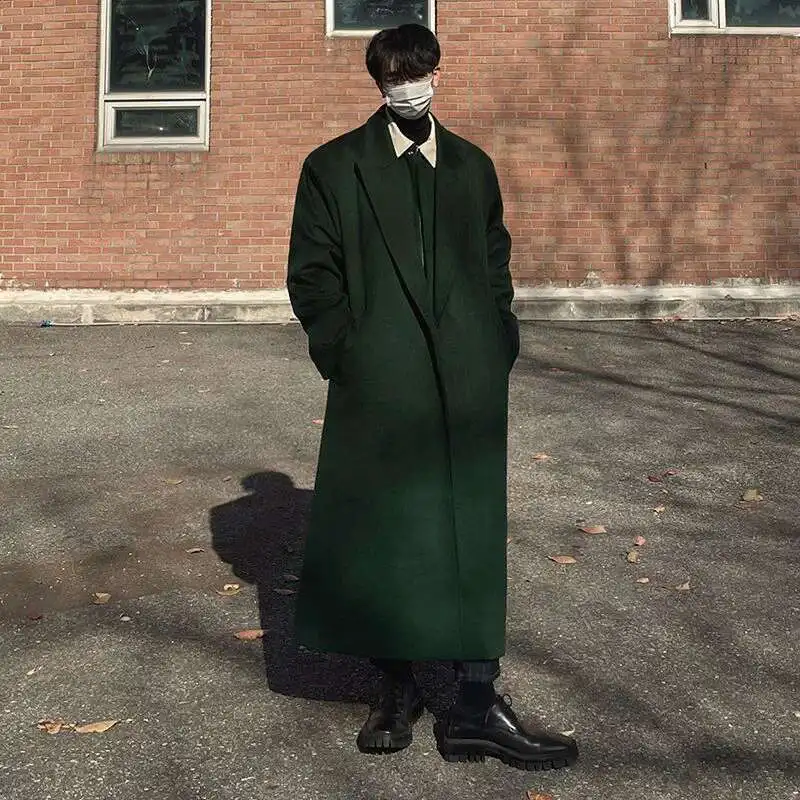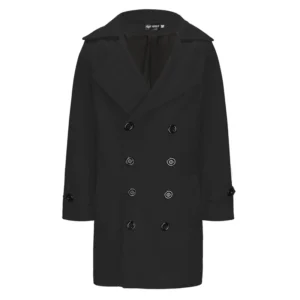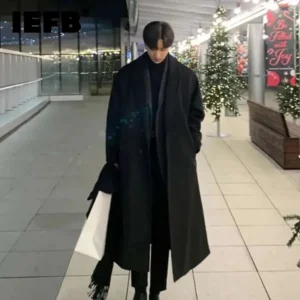Introduction: The Transformative Power of a Quality Long Winter Coat
When winter unleashes its full force, a quality long winter coat becomes more than just another garment—it transforms into your daily armor against the elements. The right coat doesn’t merely provide warmth; it delivers confidence, polished presentation, and versatile protection that adapts to various winter scenarios.
What sets exceptional winter coats apart is their ability to balance functional necessity with stylistic expression. While keeping you insulated from biting winds and freezing temperatures, a well-chosen coat simultaneously serves as your most visible style statement during the coldest months. This dual role makes your coat selection one of the most impactful wardrobe decisions you’ll make.
In this comprehensive guide, we’ll navigate the essential styles, materials, fit considerations, and care techniques that ensure your investment delivers both immediate comfort and enduring value. The expert team at Metro Cloak has distilled years of specialized outerwear knowledge to help you understand what truly matters when selecting your perfect winter companion.
Understanding the fundamentals of choosing right coat length creates the foundation for finding a winter coat that not only protects but also flatters your proportions. Once you grasp these principles, exploring our collection of men’s long winter coats becomes an informed journey rather than an overwhelming task.
Essential Long Winter Coat Styles: Finding Your Perfect Match
Before diving into specific styles, it’s important to understand that each coat category evolved for different purposes, explaining their unique design elements and functionality. Your lifestyle, typical activities, and personal aesthetic will guide which style best serves your needs.
The Classic Overcoat: Timeless Elegance
The overcoat represents the pinnacle of winter refinement, designed with a tailored silhouette that complements formal attire perfectly. This elegant option features:
- Clean lines with structured shoulders and a defined shape that elevates any outfit
- Single or double-breasted closures, with single-breasted versions offering versatility while double-breasted styles provide additional warmth and formality
- Premium materials like wool, cashmere, or blends that deliver substantial warmth without excessive bulk
- Knee-length or slightly longer cut that protects against cold while maintaining proportion
- Versatile styling potential from boardroom meetings to evening events
The overcoat’s refined nature makes it ideal for business settings, formal occasions, or anywhere you need to make a sophisticated impression. Our wool overcoat collection features variations from classic Chesterfields with their signature velvet collar to more contemporary interpretations with cleaner lines.
The Weather-Ready Parka: Ultimate Protection
When facing winter at its harshest, the parka delivers uncompromising protection through thoughtfully engineered features:
- Substantial length (typically mid-thigh to knee) creating a protective cocoon against wind and snow
- Insulated hood, often trimmed with fur or faux fur for face protection and added warmth
- Advanced insulation systems using either premium down (measured by fill power) or high-performance synthetic fills that maintain warmth even when damp
- Technical outer shells designed to repel moisture and block wind
- Functional details like storm cuffs, multiple pockets, and adjustable closures
The modern parka bridges the gap between expedition-grade protection and urban practicality, making it perfect for casual everyday wear in serious winter conditions. Explore our men’s parka coat selection to discover options ranging from sleek city-friendly designs to robust outdoor-focused models.
The Versatile Trench Coat: Sophisticated Weather Defense
The trench coat combines heritage military design with adaptable functionality:
- Classic double-breasted front with a belted waist that creates a defined silhouette
- Distinctive details like epaulettes, storm flaps, and wrist straps—all originally designed for practical purposes
- Traditional gabardine or cotton construction, often treated for water resistance
- Modern versions featuring removable liners or technical fabrics for enhanced protection
- Versatile styling potential spanning business formal to smart casual contexts
While traditionally designed for rainy conditions, winter versions of trench coats incorporate heavier materials and insulated liners, making them excellent transitional pieces for milder winter climates or early/late season wear.
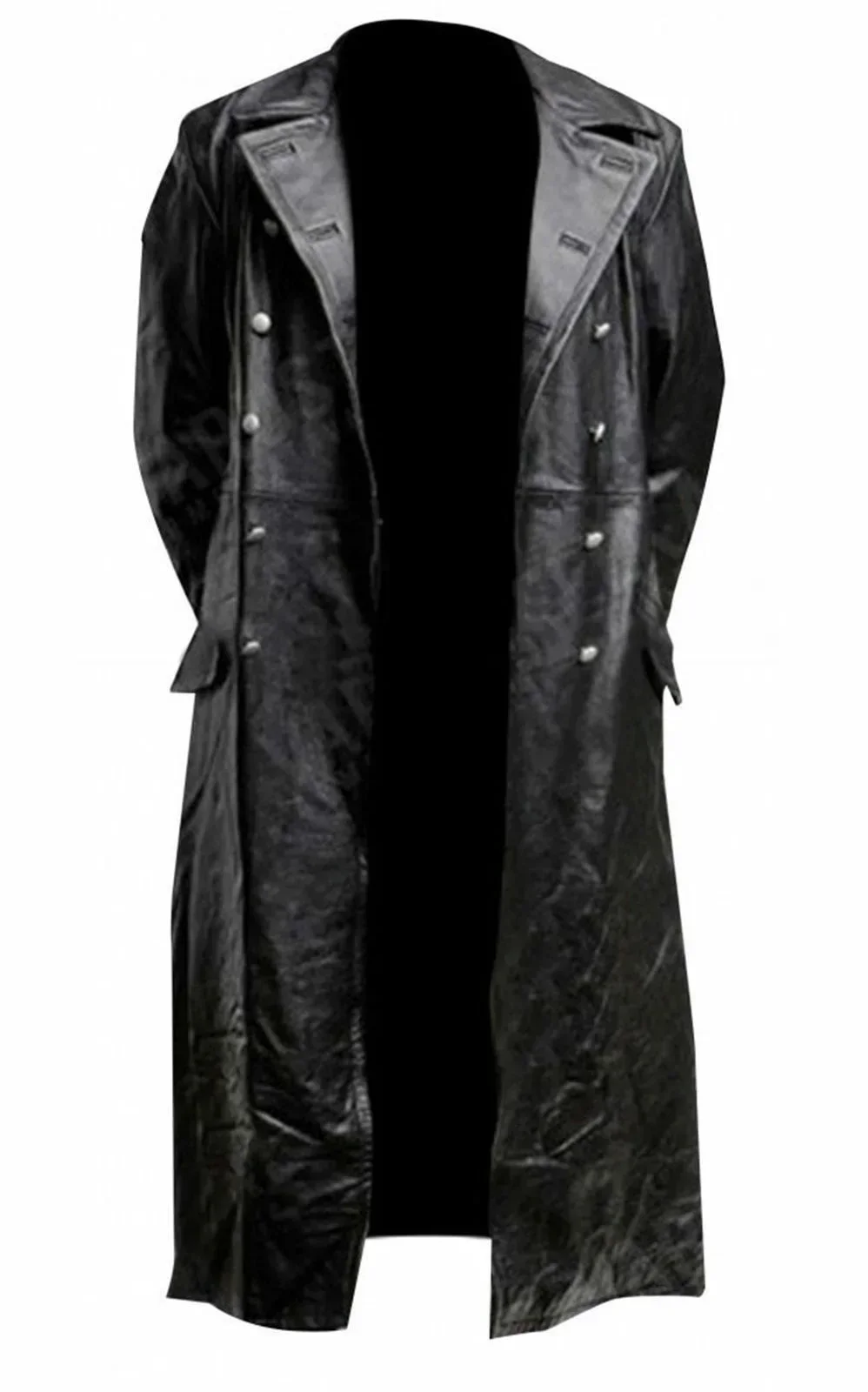
The Duffle Coat: Casual Heritage
With its distinctive toggle closures and relaxed silhouette, the duffle coat offers casual sophistication with historical roots:
- Signature wooden or horn toggle closures attached to leather loops for ease of use even with gloves
- Integrated hood providing additional weather protection
- Traditionally crafted from heavy Melton wool for substantial warmth
- Boxier, less tailored cut allowing comfortable layering underneath
- Casual to smart-casual positioning making it ideal for weekend and everyday wear
The duffle coat strikes a perfect balance between practical functionality and approachable style, looking equally at home with jeans for weekend errands or layered over business casual attire.
The Long Peacoat: Naval-Inspired Protection
The peacoat’s nautical heritage translates to robust winter protection when extended to longer lengths:
- Characteristic double-breasted front with broad lapels that can be fully buttoned for throat protection
- Dense, heavy wool construction originally designed to protect sailors from ocean spray and wind
- Vertical hand warmer pockets positioned for both function and style
- Longer variations extending to mid-thigh, providing more coverage than traditional hip-length peacoats
- Smart-casual versatility that works with everything from dress pants to denim
The extended peacoat represents the perfect middle ground between formal overcoats and casual parkas, delivering substantive protection without excessive formality. Understanding how to leverage men’s coat length style options helps you select the variation that best complements your height and build.
Key Selection Criteria: Making an Informed Choice
Beyond style preference, several critical factors determine whether a winter coat will truly serve your needs through multiple seasons.
Material Quality: Foundation of Performance
The materials used in your winter coat directly influence its warmth, durability, and maintenance requirements:
Natural fibers like wool and cashmere provide exceptional insulation by trapping warm air in their complex fiber structures. Pure wool offers excellent durability and natural water resistance, while cashmere delivers unmatched softness and warmth-to-weight ratio, albeit at higher cost and with greater care requirements. Many premium coats in our wool blend coat selection incorporate both materials for balanced performance.
Technical fabrics bring specialized performance properties—ripstop nylon and polyester shells resist tears and abrasion while shedding moisture. Modern membranes add waterproofing while maintaining breathability, preventing overheating during active winter pursuits.
Insulation quality varies dramatically, with down fill measured by “fill power” (600-900+, higher numbers indicating better insulation and compressibility). Premium synthetic alternatives like PrimaLoft and Thinsulate offer reliable warmth even when damp, making them superior for wet conditions.
The relationship between shell material and lining is equally important—wool coats typically feature smooth acetate or cupro linings for easy on/off, while technical outerwear often employs brushed tricot or mesh for moisture management and comfort.
Climate Compatibility: Matching Coats to Weather Conditions
Your local winter conditions should heavily influence your coat selection:
- Cold-dry climates (interior regions with low precipitation) prioritize exceptional insulation and wind resistance—look for high fill-power down, substantial wool weights, and windproof shell construction
- Wet-cold environments (coastal or Great Lakes regions) demand waterproof/water-resistant outer shells with reliable insulation that performs when damp—typically synthetic fills or treated down
- Windy conditions require close attention to closure systems, adjustable cuffs, drawcord hems, and hood designs that prevent cold air infiltration
- Variable climates benefit from adaptable features like removable liners, ventilation options, and adjustable components
Understanding your specific needs helps narrow choices significantly. For those facing particularly harsh conditions, our guide to choosing coats for extreme cold provides specialized recommendations.
Construction Quality: Indicators of Longevity
Construction details often separate investment-worthy coats from disposable options:
- Seam quality: Look for reinforced, taped, or welded seams depending on coat type—exposed stitching should be even, tight, and without loose threads
- Hardware durability: Premium coats feature substantial metal zippers (YKK or RiRi), genuine horn or corozo buttons secured with durable backing, and solid metal snaps or closures
- Lining attachment: Quality coats anchor linings at all critical stress points while allowing natural movement between shell and lining
- Reinforcement at stress points: Examine collar joins, pocket corners, and vent bottoms for additional reinforcement stitching
- Collar and cuff construction: These high-wear areas should feature multiple layers of fabric with clean, symmetrical shaping
These details directly influence how long your coat will maintain its appearance and functionality through regular winter use.
Functional Features: Beyond Basic Warmth
Thoughtful features enhance daily usability beyond simple insulation:
- Strategic pocket placement with secure closures protects valuables while providing convenient hand warming
- Closure systems ranging from hidden plackets (formal coats) to storm flaps and two-way zippers (technical styles) affect both aesthetics and protection
- Ventilation options like underarm zips or back vents allow temperature regulation during changing conditions
- Hood design considerations include removability (for versatile styling), adjustability (for wind protection), and sufficient depth (for effective coverage)
- Interior features such as media pockets, document storage, and thermal lining enhancements add practical everyday value
Finding Your Perfect Fit: The Measurement Guide
The finest materials and craftsmanship won’t compensate for poor fit. Here’s how to ensure your coat enhances rather than hinders your appearance:
Essential Measurements:
1. Chest/Bust: Measure the fullest part of your chest, keeping the tape parallel to the floor
2. Shoulders: Measure from the edge of one shoulder across to the other at the widest point
3. Sleeve Length: From shoulder seam to just below the wrist bone
4. Overall Length: From the base of your collar to your desired endpoint (typically knee or mid-thigh for long winter coats)
When selecting size, remember most winter coats are designed to accommodate layers underneath. For dress coats meant to be worn over suits, consider going up one size from your normal jacket size.
Proper fit indicators include:
– Shoulder seams aligning with your natural shoulder edge
– Sufficient chest room to button/zip without pulling
– Sleeves covering your wristbone when arms are extended
– Ability to comfortably raise arms without severe binding
– Length proportionate to your height
Different body types face unique challenges—shorter men benefit from slightly shorter coats to maintain proportion, while broader builds often need roomier chest measurements without increased length. Finding the perfect coat length for your height ensures the most flattering silhouette.
Styling Your Winter Coat: Elevating Your Winter Wardrobe
Your winter coat creates immediate visual impact, making thoughtful styling essential:
For formal occasions, classic overcoats in navy, charcoal, or black coordinate seamlessly with suits. Traditional tailoring details like ticket pockets and hand-stitched lapels elevate these pairings further.
Business environments welcome both overcoats and refined trench styles. A camel overcoat paired with a navy suit creates sophisticated contrast, while darker coats offer versatility across multiple outfits.
Smart-casual contexts open up additional styling options—duffle coats or car coats over fine knitwear and trousers strike an elegant balance of refinement and approachability.
For weekend casual wear, consider parkas or longer peacoats paired with jeans and boots. These combinations deliver practicality without sacrificing style.
Regarding color selection, consider your existing wardrobe—neutral tones like navy, charcoal, camel, and black offer maximum versatility, while burgundy or dark green provide distinguished alternatives that remain surprisingly adaptable.
Mastering winter layering with long overcoats creates sophisticated dimension while maximizing warmth in fluctuating temperatures.
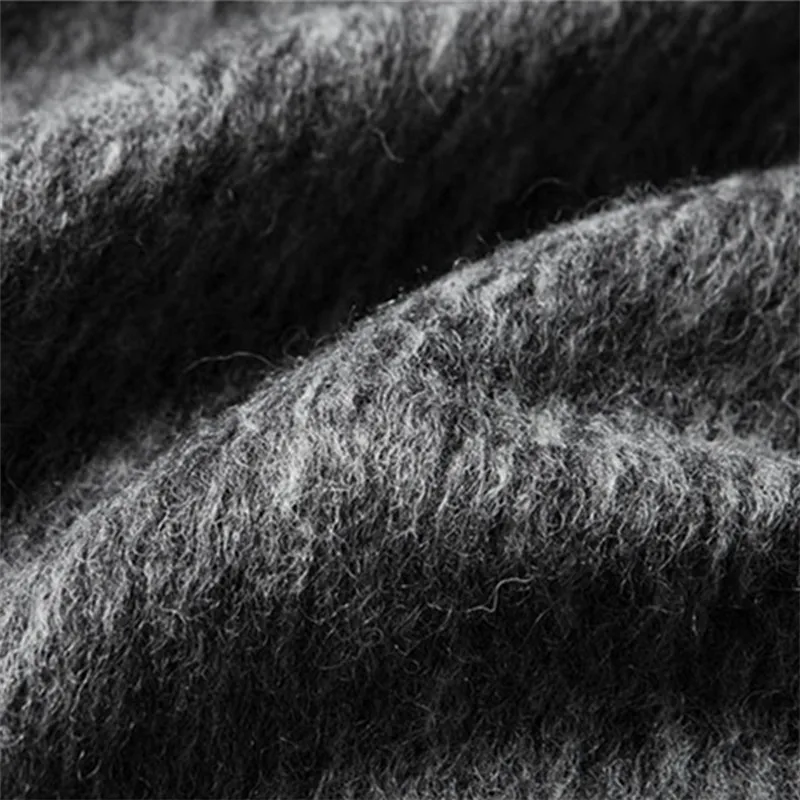
Care and Maintenance: Preserving Your Investment
Quality winter coats can deliver decades of service with proper care:
Material-Specific Cleaning:
– Wool and cashmere coats typically require professional dry cleaning once per season
– Technical fabrics often benefit from specialized cleaners that maintain water-resistant treatments
– Down insulation needs gentle cleaning followed by proper drying to maintain loft
Storage Protocols:
– Clean thoroughly before off-season storage
– Use wide, shaped hangers to maintain shoulder structure
– Cover with breathable garment bags—never plastic
– Store in cool, dry locations away from direct sunlight
– Consider cedar elements to deter moths from natural fibers
Regular Maintenance:
– Brush wool coats with a proper garment brush after several wears
– Treat salt stains immediately with diluted white vinegar solution
– Allow damp coats to dry naturally at room temperature—never force-dry
– Address minor damage promptly before it spreads
For leather elements or full leather coats, specialized care becomes crucial. Our long-term leather coat care guide provides detailed instructions for maintaining these premium materials.
Mens Heavy Winter Coat, Mens Insulated Coat, Mens Parka Coat
Price range: $175.52 through $237.36 Select options This product has multiple variants. The options may be chosen on the product pageMens Double Breasted Pea Coat, Mens Wool Blend Coat, Mens Wool Pea Coat
Price range: $136.84 through $157.36 Select options This product has multiple variants. The options may be chosen on the product pageMens Cashmere Overcoat, Mens Hooded Winter Coat, Mens Wool Blend Coat
Price range: $128.72 through $139.68 Select options This product has multiple variants. The options may be chosen on the product pageMens Black Overcoat, Mens Black Wool Coat, Mens Wool Overcoat
$339.18 Select options This product has multiple variants. The options may be chosen on the product pageMens Grey Overcoat, Mens Wool Blend Coat, Mens Wool Overcoat
$201.28 Select options This product has multiple variants. The options may be chosen on the product pageMens Herringbone Coat, Mens Long Overcoat, Mens Wool Overcoat
Price range: $197.16 through $203.69 Select options This product has multiple variants. The options may be chosen on the product page
Addressing Common Concerns: Expert Solutions
Many men share similar questions when selecting winter coats. Here are expert solutions to common concerns:
Finding Balance for Different Body Types
Shorter men should avoid overwhelming their frame with excessively long coats—knee-length typically works better than calf-length. Conversely, taller men benefit from longer coats that maintain balanced proportions. Our guide to finding perfect coat length for every body type addresses these considerations in detail.
Maximizing Investment Value
Quality winter coats represent substantial investments. To maximize value, prioritize versatile styles in timeless colors that coordinate with multiple outfits. This approach delivers lower cost-per-wear while ensuring relevant style for years to come.
Sustainability Considerations
Sustainable coat selection focuses on longevity and material sourcing. Natural fibers like wool and cashmere biodegrade more readily than synthetics, while quality construction ensures garments remain in service rather than landfills. Proper care further extends useful life, reducing environmental impact.
Frequently Asked Questions: Quick Expert Answers
How many winter coats should a man own?
Most men benefit from at least two options: a dressier coat for formal/business situations and a more technical/casual option for severe weather and weekend wear. As your wardrobe expands, adding specialized options for different conditions becomes valuable.
Which long coat style provides the most warmth for extreme conditions?
Technical parkas with high fill-power down insulation (800+) and windproof/waterproof outer shells deliver maximum thermal protection. Look for features like sealed seams, insulated hoods, and storm cuffs for comprehensive weather defense.
Can shorter men wear long coats effectively?
Absolutely. The key is proportion—shorter men should select coats that end at or slightly above the knee rather than mid-calf styles. Proper tailoring ensures sleeves and proportions complement rather than overwhelm smaller frames.
What’s the difference between water-resistant and waterproof coats?
Water-resistant coats (like most wool options) repel light moisture temporarily but will eventually saturate. Waterproof coats incorporate membranes or treatments that prevent water penetration even during prolonged exposure, though they may sacrifice some breathability without proper design.
How should a winter coat fit over a suit jacket?
A properly sized winter coat accommodates a suit jacket without restriction while maintaining a clean silhouette. The shoulder seams should align with your natural shoulder plus the minimal padding of your suit, while the chest provides approximately 2-3 inches of extra room.
Long-Term Winter Coat Strategy: Building Your Collection
Rather than viewing coat purchases as isolated decisions, consider developing a strategic collection that addresses all your winter needs:
Start with foundational pieces that deliver maximum versatility—a classic wool overcoat and a weather-resistant parka form an excellent core collection handling most situations from formal events to blizzard conditions.
As your collection develops, introduce specialized options that address specific scenarios or style preferences—perhaps a statement camel coat for distinguished occasions or a technical shell for active winter pursuits.
Quality coats benefit from rotation—alternating between options not only coordinates better with different outfits but also allows fabrics to rest, shed moisture, and recover between wearings, significantly extending their useful life.
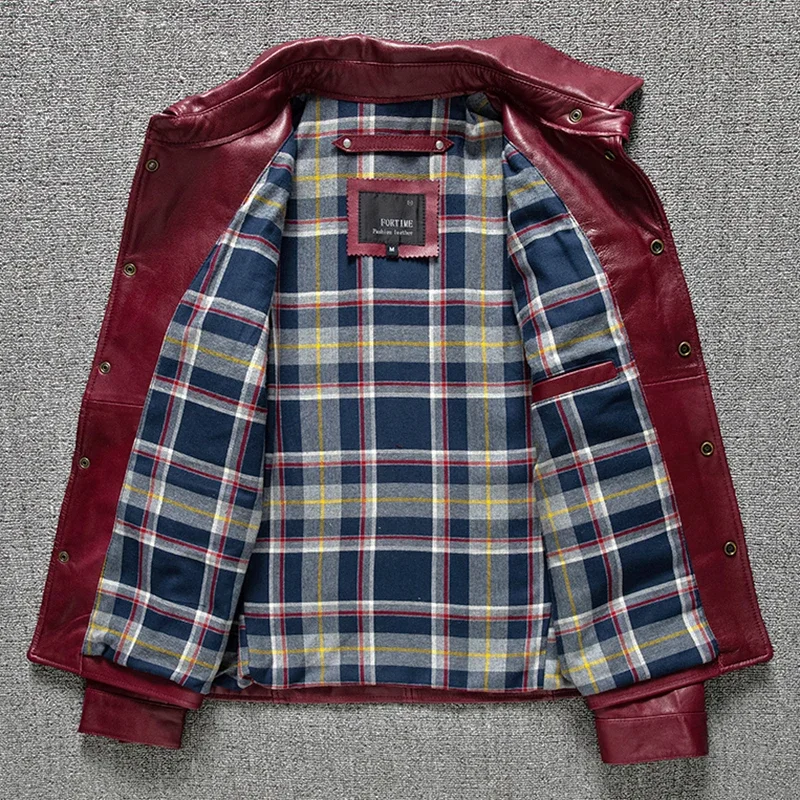
Beyond Winter: Transitional Season Coat Considerations
Quality winter coats can serve beyond their primary season with thoughtful adaptations:
Early spring and late fall present milder conditions where winter coats may be modified for comfortable wear. Removable liners transform many styles into lighter shells suitable for transitional temperatures, while unlined wool coats often provide ideal weight for these periods.
Layering strategy shifts during transitions—rather than heavy insulating layers underneath, lighter options like unlined blazers or sweaters provide adequate warmth without overheating as temperatures fluctuate throughout the day.
Material weight significantly impacts seasonal versatility. Lighter wool (under 18 oz) and technical fabrics with effective ventilation adapt more readily to temperature variations than dense, heavy constructions designed specifically for deep winter.
The comparison between short versus long coat options becomes particularly relevant during these transitional periods, as changing coverage needs may influence your selection.
Coat Care Across Seasons: Year-Round Protection Plan
Maintaining your investment requires attention throughout the year, not just during active use:
End-of-Season Protocol (Spring)
– Professional cleaning to remove accumulated oils, salt, and environmental contaminants
– Complete drying before storage
– Minor repair of any seam damage, loose buttons, or lining tears
– Application of appropriate protection (water repellent for technical fabrics, moth deterrents for natural fibers)
Mid-Storage Check (Summer)
– Brief airing in indirect sunlight to prevent mustiness
– Inspection for pest damage or moisture problems
– Repositioning on hangers to prevent pressure points from creating permanent creases
Pre-Season Preparation (Fall)
– Gentle steaming to release wrinkles and refresh fabrics
– Button, zipper, and closure inspection
– Re-treatment of water-resistant coatings if applicable
– Minor refreshing of surface appearance through brushing or lint removal
This seasonal care cycle ensures your coats remain ready for service year after year, protecting both their appearance and functionality while maximizing your investment value.

